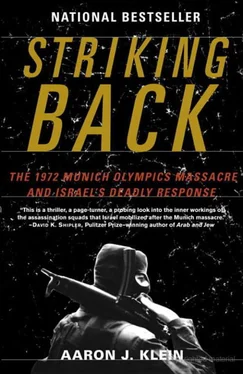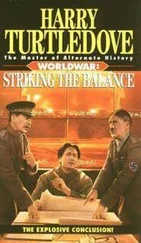The primary mission for Hofi was rehabilitating and rebuilding the Mossad itself. Postwar reality demanded a shift in priorities. Manpower was diverted elsewhere. But terror attacks within Israeli cities meant the Mossad had to be prepared to respond. Only one and a half years after taking the reins, the cautious Hofi hesitantly authorized preventive assassinations in Europe and the Middle East. At first, the Munich perpetrators were not targeted. But that would change.
31
OVERSEAS TERRORISM GRINDS TO A HALT
EAST GERMAN HOSPITAL
FRIDAY, MARCH 30, 1978
Dr. Wadi Haddad, the international man of terror responsible for dozens of airline hijackings and other earthshaking attacks against Israeli, American, and European targets the world over, died a slow, painful death in a grim East German hospital. The Palestinian doctor flew to Germany from Iraq, terminally ill. Once a fat man, he was now weak and emaciated, confined to his bed, waiting out his days. He died on March 30, 1978, only forty-eight years old.
The few dozen loyalists who had left the PFLP with Haddad were hard-pressed to explain the riddle of his torturous death. He died of an unknown terminal disease that attacked and debilitated his immune system. They could not be certain if his death was natural or induced. His more imaginative friends believed that Haddad’s Iraqi patron, the ominous Vice President Saddam Hussein, had the doctor secretly poisoned once he was no longer useful to that regime. As always, some saw the hand of the Mossad in Haddad’s death, claiming poisoning, but lacking any proof. Over the years the conspiracy theories dissipated and only the bitter fact of his inexplicable end remained. The bachelor, having amassed riches from years of terrorist activity, left millions of dollars to his sister.
For years Israel kept silent on the matter. Now it is possible to reveal that Dr. Haddad died an unnatural death. Poison was slipped into his food. The Mossad had sought to kill him ever since they learned that he was the mastermind behind hijackings carried out by the PFLP. They figured assassination was the only way to stop further deadly plans.
Haddad was a prolific and skilled terrorist. He was the first to hijack an El Al plane, on July 23, 1968. After weeks of captivity, Israel, headed at the time by Prime Minister Levi Eshkol, freed Palestinian prisoners in exchange for the hostages—the first and last time the Israeli government would ever bow to terrorist extortion. That El Al hijacking was the first in a series of plane hijackings designed to raise the profile of the Palestinian predicament. In September 1970, Dr. George Habash, the leader of the PFLP, the Marxist Palestinian terror organization that he founded along with Haddad, flew to North Korea on business. While he was away, Haddad had five planes hijacked. They were flown to Jordan, emptied, and then exploded for the cameras.
His operatives hijacked a Lufthansa flight en route from New Delhi, India, to Germany, forcing it to land in Aden, Yemen. Lufthansa paid several million dollars ransom for the plane and the passengers. Detractors of the supposedly Marxist terrorist claimed that Haddad deposited some $1 million in his own account. He was responsible for the PFLP’s relationship with international terrorist organizations in Europe, Asia, and South America, offering them training facilities in Lebanon and strengthening their ties. One result: the Marxist Japanese Red Army attack at Lod Airport in 1972.
Haddad and his followers left the mainstream of the PFLP after that bold-headline attack, quarreling over the necessity of overseas terrorism. In October 1972 his men carried out the dubious Lufthansa hijacking that secured the freedom of the three surviving Munich terrorists. Determined to continue carrying out high-profile attacks outside Israel, his men were responsible for a December 21, 1975, attack on OPEC headquarters in Vienna and a late June 1976 hijacking of an Air France flight on its way from Israel.
Haddad was also willing to assist other terrorist organizations. In late February 1973, still living in Beirut, Haddad was asked by his good friend Abu-Iyad to falsify entry visas to Sudan, facilitating the attack on the embassy in Khartoum. Haddad created the visas in his print workshop within six hours.
Finally, on June 28, 1976, Haddad’s men, with the assistance of the German Baader-Meinhof Gang, hijacked an Air France Airbus 747 en route from Israel to Paris, forcing the plane to land in Entebbe, Uganda. On July 4, 1976, the American Bicentennial, the hostage situation was resolved by a team of Israeli commandos led by Sayeret Matkal. Several Hercules C-130 cargo planes flew over one thousand miles beyond Israel’s borders and landed in Entebbe. Once safely on the ground, the lead team of commandos proceeded to the terminal. Dressed to resemble the Ugandan dictator Idi Amin and his entourage, and riding in the type of black Mercedes he favored, the team from Sayeret Matkal drove to the terminal, stormed the passenger hall, and rescued the stunned hostages.
Entebbe was the last straw. The Mossad and Military Intelligence upgraded the importance of assassinating Dr. Wadi Haddad after the victorious mission. Haddad, however, resided in Baghdad and rarely traveled, complicating their work. In the spring of 1977, nearly one year after Entebbe, it was clear that the mountain would not come to Muhammad; the Mossad decided to bring Muhammad to the mountain. An assassination plan took shape and was authorized by newly inaugurated Prime Minister Menachem Begin.
Dr. Haddad had a weak point: his sweet tooth. The man loved good chocolate, Belgian chocolate, particularly; Tzomet, the human intelligence collection arm of the Mossad, was keen to capitalize on that weakness. The plan called for a reliable Palestinian agent, a member of Dr. Haddad’s organization, to bring the doctor a gift of Belgian chocolates upon return from travels in Europe. The valuable gift, unattainable in Iraq in those years, was coated by Mossad specialists with a lethal biological poison. Tzomet had good reason to believe that the chocoholic would eat the creamy squares alone, unwilling to share the delectable gift. And so it was. The agent brought his boss the gift when he got back from Europe and the doctor gleefully devoured it—alone. Weeks later he began to lose weight. He lost his appetite. Blood tests showed that his immune system was compromised. It took him a few long months to die.
The faction under Dr. Wadi Haddad’s command collapsed after his death. Dry statistics indicate that the number of attacks against Israeli targets abroad plummeted with his passing. Israeli intelligence and, in particular, the Mossad, viewed this as further proof of the effectiveness of their assassination program. The intelligence community presented these facts and conclusions to the new prime minister, explaining that the bio-hit on Haddad was the very definition of a preventive assassination, eradicating a ticking bomb, a man with a fertile mind who never stopped planning the next attack.
Menachem Begin was pleased with the execution and results of the Haddad assassination, and authorized yet another elimination, one that Mossad members somewhat arrogantly referred to as “something we just picked up…”
The target was Zuhir Mokhsan, head of the pro-Syrian Palestinian terror organization A-Tzaika. His assassination, in the summer of 1979, was not particularly complicated, and didn’t require extensive intelligence gathering. Mokhsan, who did not take even minimal safety precautions, was shot on July 25, 1979, by two assassins from Caesarea’s Kidon unit in the hallway of his apartment building in Cannes, on the French Riviera. Fatally injured, he died the next day at the Louis Pasteur Hospital in Nice. The French police announced that the murdered man had arrived in France with a Syrian diplomatic passport, claiming to have been born in Damascus. Mokhsan’s sudden death led to the dissolution of the A-Tzaika organization—another veritable well of terrorism gone dry.
Читать дальше












